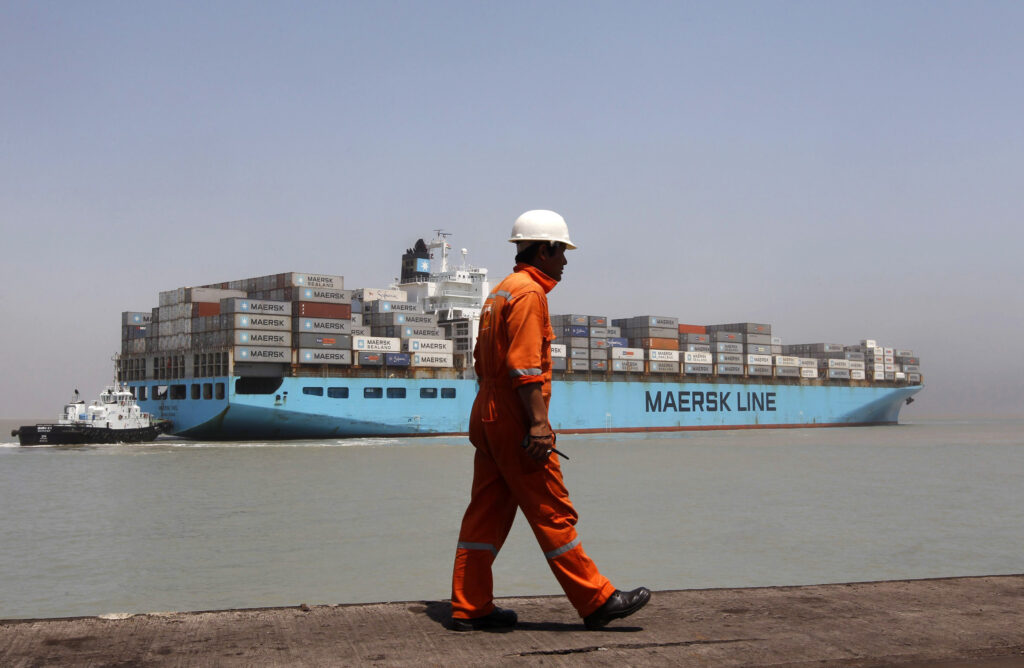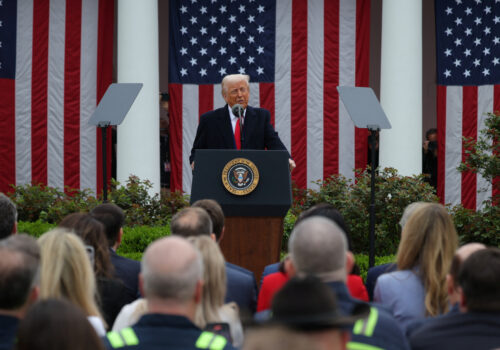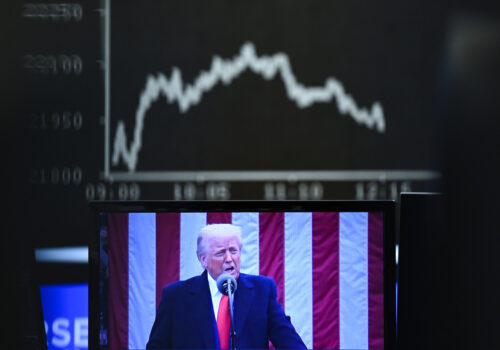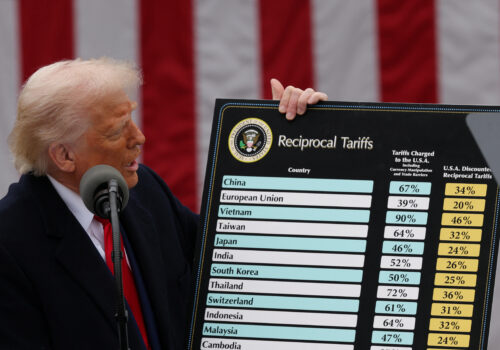International trade is going through a much-needed reset. Several major countries, most notably the United States with its dramatic announcement last week, are shifting their approaches to trade, often in more protectionist directions. But it would be a mistake to view the events of recent months in isolation. To get the full picture, it’s necessary to start much earlier and examine the larger, and in some ways more profound, changes in global trade that have led up to this moment. At the same time, while a reset in trade is necessary today, a successful reset is unlikely to be achieved by focusing only on market access or exports of manufactured goods.
What is happening?
In 2020, the World Bank published a report on how trade deals have moved away from older-style preferential trade agreements to so-called “deep trade” agreements, which go far beyond tariff barriers or market access. These “deep trade” agreements, as former Director General of the World Trade Organization (WTO) Pascal Lamy explained, are “about regulatory measures and other so-called non-tariff measures that were once the exclusive domain of domestic policy making.” These agreements “cover policy areas such as competition, subsidies, and regulatory standards,” and they go beyond conventional border measures to “regulate the behaviour of the exporting and importing government.”
Fast forward to today, and the global trade scene is very different from just five years ago. As the World Bank’s website summarizes the shift: “Powerful protectionist forces have begun to challenge the global community’s commitment to open trade; many advanced economies blame trade for job losses as manufacturing and some services shift to lower-cost destinations.”
Today, the United States, once an international advocate for open trade and competitiveness, is turning toward a more protectionist model of trade, announcing tariff and nontariff barriers and limiting market access—trade policies more commonly associated developing economies. It’s too early to predict how this will unfold, but some aspects of this global phenomenon have already come into focus.
The reasons for the change
Beginning in the 1990s, the volume of global exports and the number of international trade agreements rapidly increased. In much of the period since then, trade negotiations were managed between policymakers and seasoned bureaucrats, all working toward ensuring ease for the domestic consumer. Much of this work was done away from substantial public attention. Trade negotiations today, however, are too often loud political undertakings, used as either a coercion mechanism or a friendly gesture. The past few US administrations, several Latin American governments, and several Southeast Asian governments have tried to negotiate trade deals that are “worker-centered” and have attempted to advance trends such as “friend-shoring” or near-shoring, as many corporations planned to diversify their supply chains away from China.
While the specter of China influenced this pivot, there was also an emphasis on modernizing manufacturing with more sophisticated technology. What was overlooked in this process, though, is the legitimate reason why advanced economies lost their competitive advantage in manufacturing to emerging economies. As economist Jagdish N. Bhagwati explained in 1982,
the pressure of import competition . . . can be seen as being addressed to industries undergoing a basic shift in comparative advantage, not because of technological advances arising in different parts of the world which are not being shared by competing nations, but rather because of shifts in labour costs or because “learning by doing” by latecomers is altering the traditional competitive edge of industries in the West.
Labor-intensive industries are increasingly demonstrating comparative advantage in emerging economies, as they are compatible with capital intensity.
As capital-intensive industries are at a comparative advantage with emerging economies, technological advancements leading to digital trade are creating an advantage for Western economies. Digital commerce allows firms of all sizes, anywhere in the world, to gain access to new markets. But many emerging economies, although catching up fast, still lack the basics required for digital trade or even trade in services. These barriers can vary from inadequate infrastructure and regulatory uncertainty to data localization rules that restrict cross-border data flows.
Digital trade plays a larger role than ever in the global economy. With an 8.1 percent average annual growth rate for almost two decades, it has outpaced other categories, such as goods trade. Yet this does not benefit all economies equally. International cooperation is crucial to promoting common and universal laws on digital trade as a precondition for it to grow and deliver more broadly shared benefits. But that will require building consensus on such rules.
A pivot away from the WTO
Traditionally, the role of consensus building has been played by multilateral organizations such as the WTO. But for the past three decades, the WTO has experienced a slow and steady decline in its influence as it has consistently faltered at its primary role of maintaining a rule-based trading system, ensuring predictability, and encouraging its member countries to make tariff adjustments in line with their economic development. One of the reasons for its decline is that the WTO’s dispute settlement mechanism has not been functioning up to its potential due to the blocking—mainly by the United States—of appointments to its appellate body, leading to a paralysis of the appeals process and leaving trade disputes unresolved. In addition, many of the member countries refuse to let go of their self-declared “developing economies” status and continue to claim subsidies, which has further sowed discontent among developed economies.
Despite these issues, no member has exited the WTO since its inception in 1995. Since the WTO assures market access and reprimands discriminatory trade practices, it would be unwise for any member to exit. One of the WTO’s recent successes came when it waived off certain patent restrictions to ensure the accessibility of COVID-19 vaccines.
Given the movement of labor-intensive jobs to developing economies, advanced Western economies’ domination of digital trade, and the disarmament of the WTO, most economies have started pivoting toward protectionist trade practices that are designed to restrict imports and promote domestic industries instead. Each nation is now pursuing its own political agenda, mistakenly believing that protectionist actions will bring economic benefits. Some are implementing soft protectionism, such as subsidies for favored industries. Others are implementing all-out protectionist policies. Meanwhile, rhetoric about geopolitical threats—often China—is used to garner support for preferential trade deals.
The rise of preferential trade agreements
As a result of the forces outlined above, preferential trade agreements (PTAs) are becoming the norm globally as an alternative arrangement to keep trade predictable and for economies to defend themselves against lawlessness. This is encouraging regionalism and fragmented trading practices, which often leads to fierce disagreements. As Bhagwati argued in 2008, “With PTAs proliferating, the trading system can then be expected to become chaotic.” A situation ensues in which there are “[c]risscrossing PTAs, where a nation had multiple PTAs with other nations, each of which then had its own PTAs with yet other nations . . . Indeed, if one only mapped the phenomenon, it would remind one of a child scrawling a number of chaotic lines on a sketch pad.”
The last decade has seen some significant preferential trade agreements ratified or at least signed. Significant among them are the United States-Mexico-Canada Agreement, the Comprehensive and Progressive Agreement for Trans-Pacific Partnership, the African Continental Free Trade Area, and the Regional Comprehensive Economic Partnership. Countries in such regional preferential trade agreements account for about 78 percent of the world’s gross domestic product.
However, what is concerning is that the three most important traders—China, the United States, and the European Union—have been unable to negotiate any trade agreements among themselves. Each of the three economies sees the others as sources of significant competition instead of comparative advantage. Regional trade agreements naturally exclude the economies that are not part of the bloc.
Yet, the interdependence on other markets is evident from 2021 trading data, which shows that 70 percent of North America’s exports, 41 percent of Asia’s, and 31 percent of Europe’s went outside their respective regions, while Africa and Latin America depend on other regions for 85 percent of their exports. Moreover, the COVID-19 pandemic starkly revealed how interconnected—and therefore vulnerable—global trade is. Supply chain shocks during the pandemic encouraged many countries and companies to hedge their risks.
Where global trade goes from here
This global trade reset cannot be achieved by focusing only on market access or exports of manufactured goods. Nor can it be achieved by signing regional trade agreements. Instead, the next chapter of global trade should rely on a new set of priorities that enhance a collective sense of security.
What would this look like? This new era should include trade policies that advance economic interests as well as geopolitical interests. Governments should pursue climate and energy security, a digital economy that has universally agreed artificial intelligence regulations, and supply chains that are not dependent on one source alone. Resets are never easy in the short term, but they are an unavoidable phenomenon. In the best-case scenario, today’s global trade turmoil may lead to tomorrow’s renaissance.
Ridhika Batra is a nonresident senior fellow at the Atlantic Council’s South Asia Center.
Further reading
Fri, Apr 4, 2025
Experts react: How the world is responding to Trump’s ‘liberation day’ tariffs
New Atlanticist By
Atlantic Council experts tour the world to take stock of how US trading partners are responding to US President Donald Trump’s new reciprocal tariffs.
Thu, Apr 3, 2025
Why the markets keep getting Trump wrong
Inflection Points By Frederick Kempe
Investors repeatedly miscalculated US President Donald Trump’s far-reaching intentions regarding tariffs ahead of his announcements on April 2. Is this time different?
Wed, Apr 2, 2025
How Trump’s ‘liberation day’ tariffs will transform global trade
Fast Thinking By
Our experts share their insights on how US President Donald Trump’s sweeping tariffs will impact US trade partnerships and the global economy.
Image: A worker walks past a container ship at Mundra Port in the western Indian state of Gujarat April 1, 2014. The way billionaire Indian infrastructure-builder Gautam Adani sees it, working with the government does not make him a crony-capitalist. Adani's rapid ascent to the top tier of Indian business is often associated with the rise of Narendra Modi, the Hindu nationalist opposition leader widely expected to become India's next prime minister once the country's election ends next month. Its flagship Adani Enterprises soared 22.9 percent for its biggest daily gain on Thursday and has nearly doubled since the start of February, compared with a nearly 20 percent gain in the infrastructure index. Picture taken April 1, 2014. REUTERS/Amit Dave




